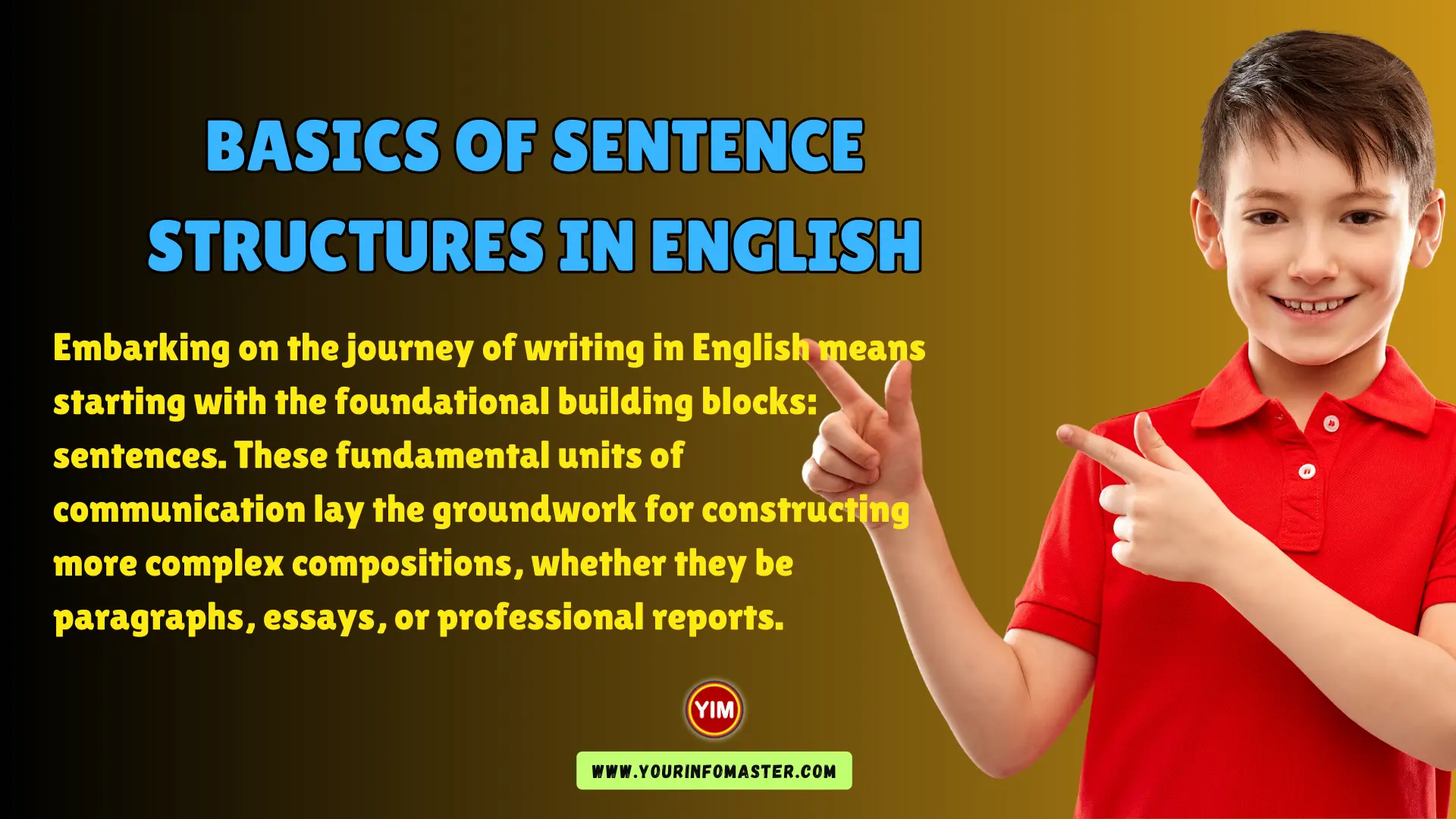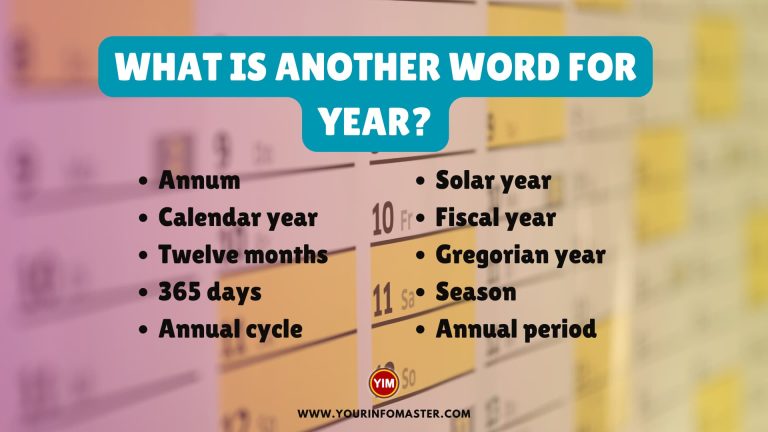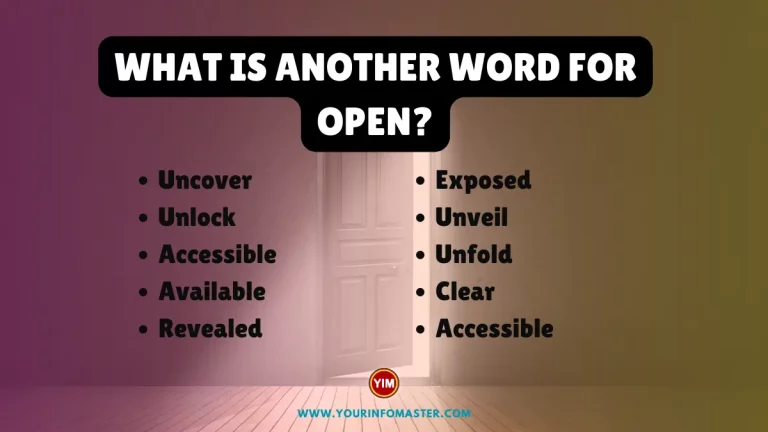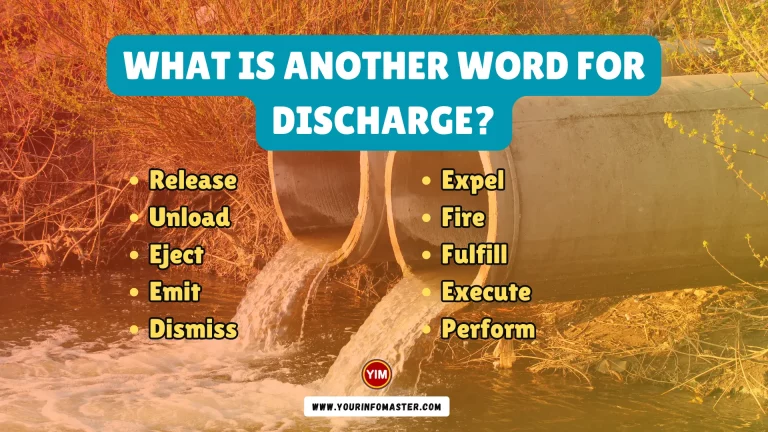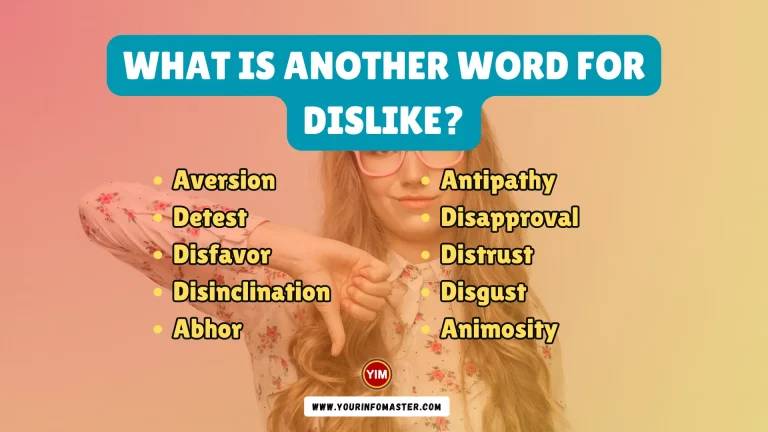In this article I will teach you about Basics of Sentence Structures in English.
Embarking on the journey of writing in English means starting with the foundational building blocks: sentences. These fundamental units of communication lay the groundwork for constructing more complex compositions, whether they be paragraphs, essays, or professional reports.
As we delve into the world of sentence structures, we’ll explore how mastering these essential elements is the key to creating clear, cohesive, and impactful written works.
Also read: What are the Plant Names in Spanish?
Four Sentence Structures in English
Here are four sentence structure in English:
1. Simple Sentences
A simple sentence consists of one independent clause that expresses a complete thought. It contains a subject and a verb and can stand alone as a complete sentence.
Examples:
- She dances gracefully.
- The sun sets over the horizon.
- Dogs bark loudly.
- He reads novels for hours.
- The flowers bloom in spring.
- They play soccer every Saturday.
- The river flows gently.
- I enjoy listening to music.
- Birds chirp in the morning.
- The cat naps peacefully.
2. Compound Sentences
A compound sentence is formed by joining two independent clauses using a coordinating conjunction (e.g., and, but, or) or a semicolon.
Examples:
- She loves painting, and he enjoys playing the piano.
- I wanted to go to the party, but I was too tired.
- They went to the beach, and they swam in the ocean.
- He is good at math, yet he struggles with English.
- I’ll have tea, or I’ll have coffee.
- The sun is shining brightly; the sky is clear.
- She danced on the stage, and the audience cheered.
- He studied diligently for the test, so he got an A.
- She is talented in both singing and dancing.
- They went for a hike, or they stayed home and watched a movie.
3. Complex Sentences
A complex sentence contains an independent clause and one or more dependent clauses. The dependent clause cannot stand alone as a complete sentence.
Examples:
- After I finish my work, I’ll go for a walk.
- Because it was raining, we stayed indoors.
- She studied hard since she wanted to excel.
- Although the movie was long, it was enjoyable.
- Whenever I feel sad, I listen to music.
- He cannot eat dairy products as he is lactose intolerant.
- I’ll come to the party if I can find a babysitter.
- Since I didn’t have my umbrella, I got wet in the rain.
- Unless you practice regularly, you won’t improve.
- While I was reading, the phone rang.
4. Compound/Complex Sentences
A compound/complex sentence is a combination of a compound sentence and a complex sentence. It includes two or more independent clauses and at least one dependent clause.
Examples:
- Although she wanted to travel, she couldn’t afford it, so she decided to save money.
- He loves to swim, but he’s allergic to chlorine, so he sticks to outdoor pools.
- I’ll finish my project by Friday, and I’ll submit it to my supervisor, who will review it.
- She enjoys cooking new recipes, and she often tries international dishes that she finds online.
- Since it was a sunny day, they went for a picnic, but they forgot to bring sunscreen.
Understanding these different sentence structures is crucial for crafting well-organized and engaging written content in English. By mastering the art of combining simple, compound, complex, and compound/complex sentences, you’ll be equipped to convey your ideas with clarity and sophistication.
Also read: What are the Animals Names in Spanish?
Conclusion
Mastering the diverse range of sentence structures, including simple, compound, complex, and compound/complex sentences, empowers writers to convey ideas effectively and create compelling narratives. By harnessing the art of combining these structures, writers can craft eloquent and engaging content that captivates readers and elevates their writing prowess.
If you really enjoyed the article “Basics of Sentence Structures in English,” then I would be very grateful if you’d help it spread by emailing it to your friends or sharing it on Twitter, Instagram, or Facebook. Thank you!
Have you read “Basics of Sentence Structures in English?“ Which of these blogs are you reading, and how is it similar to one of them?
Read More
- Basics of Sentence Type for English Learners
- How Do You Writing Descriptive Paragraphs?
- 5 Tips to Improve Writing in English
- 10 Common Sentence Mistakes in English
- Common Spelling Problems in English
- Showing Addition in Written English
- Synonyms for Words that start with E
- Synonyms for Words that start with D
- Synonyms for Words that start with C
- Synonyms for Words that start with B
- 30 Spanish Sayings With English Translations
- 50 Quotes on Love in Spanish that will Melt Your Heart
- 50 Most Famous Spanish Quotes
- 20 Most Famous Spanish Proverbs
- 10 Facts About the Spanish Language
- Synonyms for Words that start with A
- What are the Names of Clothing in Spanish?

